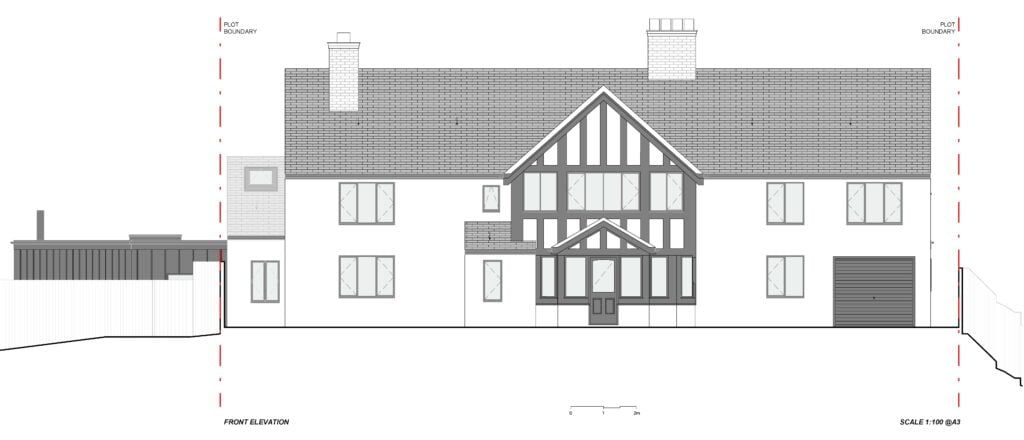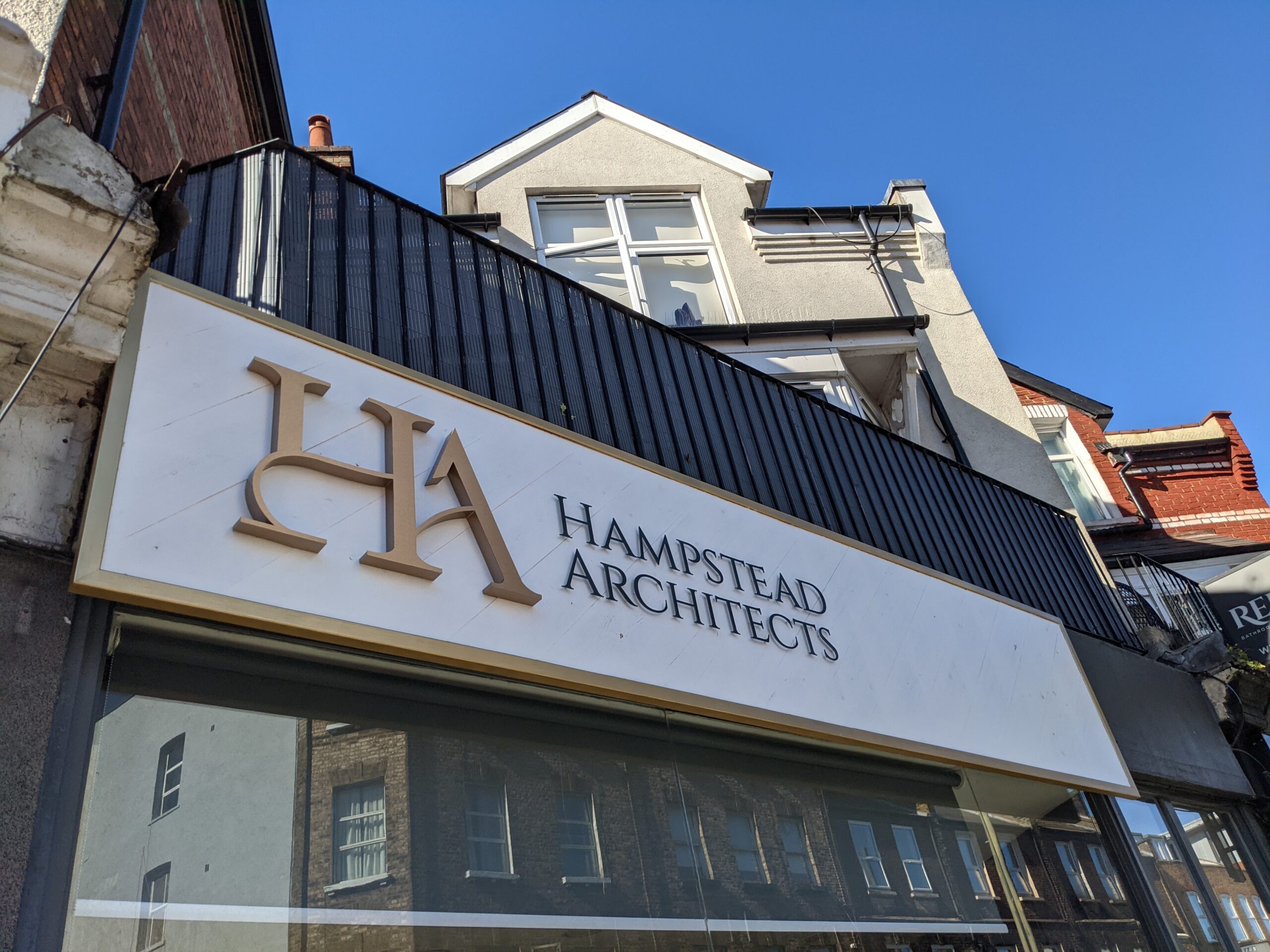How does permitted development work
Permitted development determines whether you’ll require a planning application or not. Whether you want to have a new extension or a simple renovation on your property, you need to determine whether the project falls under permitted development rights.
If the proposed development is a permitted development this means you will not be required to apply for planning permission. Before commencing any project, it’s advisable to check with the local planning authorities whether there’s a need for a full planning application.

Although most homes have permitted development, maisonettes and flats do not have. Therefore, homeowners should confirm with the local authorities and even apply for lawful development certificates. This comprehensive guide will tell you all you need to know concerning permitted development rights.
What are permitted development rights
Permitted development rights mean homeowners can make some structural changes without the need for planning permission. These changes are only permitted if they adhere to the strict design criteria that are in place.
As of 2020, there have been changes to the permitted development rights which allow for two-storey extensions of residential homes. The changes also allow for easy conversion of class E-commercial buildings to residential homes.
However, the new changes do not apply to houses built before 1948, although existing permitted development rights still apply.
How to apply for permitted development
With permitted development, no application is needed. Although permitted development rights are granted by the government, you need to check with the local planning authority to determine whether permitted development rights apply to your property. You’ll be able to know whether you’ll need a planning application for either part of your property, all of it, or none.
Although there’s no application process for permitted development, you might have to go through the prior approval process.
Why do I need prior approval
The process is necessary for any single-storey rear extension of up to 8m on a detached home and up to 6m on a different type of property. You need to inform your local authority before embarking on the project.
All the documents needed will be listed on the local authority website. Once you have submitted the documents and paid the required fees, the local authority will write to your neighbours and give them up to 21 days in case they wish to object to the development. Here, the neighbour consultation scheme comes to play.
If there’s no objection and the proposed project falls within the rules, the local authority is obliged to grant you prior approval.
If there’s any objection, they’ll consider the impact of the project and consider whether to grant or refuse approval. In case of any refusal, you can always appeal against this decision.

Do I need a lawful development certificate
Although it isn’t compulsory, you need a lawful development certificate to prove that your project fully complies with the stipulated permitted development rights. Hence, if you ever decide to sell your property, you can prove that your house was a legal project.
The duration of acquiring a lawful development certificate ( LDC ) is the same as that of planning permission. However, getting an LDC costs half the amount needed to acquire planning permission.
What can I do under permitted development rights
The scope of permitted development rights varies for both internal and external structural alterations. Some of the home improvement projects you can undertake under permitted development include the following:
- Building a porch(less than 3m squared)
- A small extension(rear, single storey, and two storeys)
- Changing space usage, e.g. garage conversion, loft conversion, etc.
- Installing rooflights
- Making internal alterations
- Erecting an antenna or erecting a satellite dish
Is there a limit to the number of changes that can be made
There’s a limit to the number of changes that can be made under permitted development stipulations since all requirements apply to the existing house as it was originally built. For older structures, it applies to the home as it was on 1st July 1948. If you’re a buyer, the changes made by the original owner since 1948 will significantly impact your permitted development allocation.
What are the restrictions for permitted development
Although most homes fall under permitted development, this is not the case for flats and maisonettes. Here planning development rights don’t apply because of the impact any structural changes would have on the neighbouring properties.
Permitted development rights can be omitted or restricted where there’s an intent to protect or maintain the character of the local neighbourhood. Hence in such circumstances, you’ll require planning permission. These circumstances include the following:
- If your property is a listed building
- If the property is in a conservation area or an area of outstanding natural beauty
- If the home is situated in a designated area
- If the proposed new dwelling house is bigger than the existing house
- Balconies, verandahs, or platforms that are more than 30cm
A quick check with the local planning authority or the government planning portal will help you determine where your property falls and whether there are any restrictions.

What size extension can you build under permitted development
As mentioned earlier, permitted development rights have limitations and stipulations that need to be adhered to. These regulations will vary with each project. In some instances, a double-storey rear conversion up to 3m is allowed whereas up to half the width of the existing house is allowed for a one-storey side extension.
A single-storey rear extension length of up to 4m is allowed for a detached house and up to 3m long for a terraced or semi-terraced house.
With the new changes in place, homeowners can have larger single-storey rear extensions of up to 8m for detached houses and 6m for terraced and semi-terraced houses. However, you need to acquire prior notification.
When it comes to any additions to the roof, permitted development rights allow hip-to-gable and rear dormer extensions as long as the size doesn’t exceed 50m3 for detached and 40m3 for terraced and semi-terraced houses.
These rights also allow for outbuildings to be built within the residential curtilage as long as it isn’t more than 3m long, 4m for a double-pitched roof, or 2.5m within 2m of a boundary.
These permissible developments highlighted above fall under different classifications, i.e., Class A for extensions and Class B for roof additions.
Do I still need to adhere to building regulations
Yes, you need to adhere to building regulations. Regardless of whether your proposed project falls under permitted development or not, all construction and home improvement building work need to adhere to the building regulations stipulations.
How to check if permitted development rights have been removed
Your local planning authority can decide to remove your permitted development rights by issuing an Article 4 direction. This might be the case if the character of an area might be affected by unrestricted building works. An ideal example will be if your property is situated in an area of acknowledged importance, such as national parks or conservation areas.
In such situations, you’d be required to submit planning applications for work that would fall under permitted development under normal circumstances.

What is the difference between planning permission and permitted development
The difference between planning permission vs permitted development is that planning permission is the consent granted by the local planning authority to make structural changes to your existing dwelling or property. In contrast, permitted development is part of the General Permitted Development Order granted by the UK government.
Another difference is that with planning permission, you need to submit a planning application, whereas no application is needed for permitted development. Instead, you can apply for a certificate of lawful development.
There’s also the duration difference whereby no decision time is required for permitted development, whereas it takes between eight to ten weeks for granting planning permission. You should also note that applying for a lawful development certificate also takes the same duration of ten weeks.
Another difference is that planning fees are necessary when making a planning application, whereas the costs incurred under permitted development will vary depending on your local authorities.
With a comprehensive guide on what you need to know concerning permitted development, you should be able to proceed with your proposed project after adhering to the necessary requirements. Most importantly, you shouldn’t overlook the role of your local council in determining whether your permitted development rights are applicable before commencing your development.
Considering these rights can be adjusted at any given time, you should ensure that you’re always updated. Also, whether you’re in Wales, England, Scotland, or Northern Ireland, the requirements differ depending on the area’s local authorities.
Planning